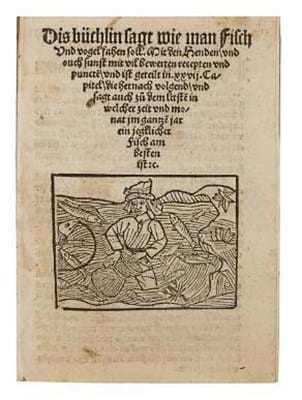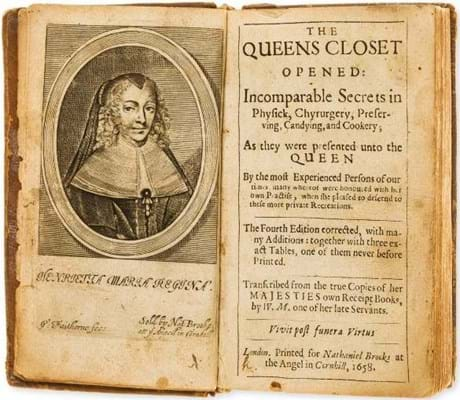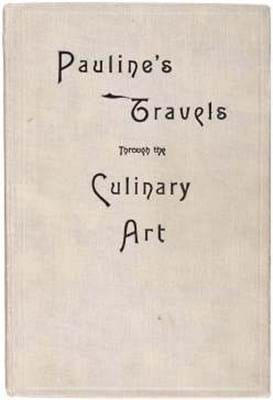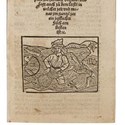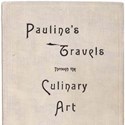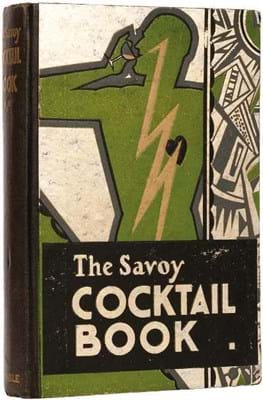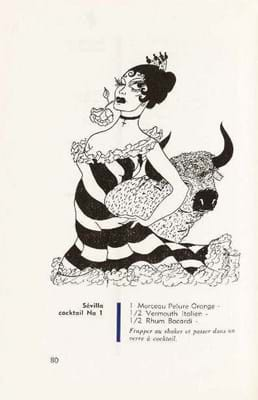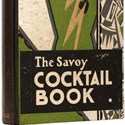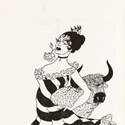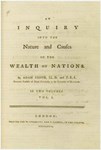“The zeitgeist that comes with The Great British Bake Off and all that has meant that material relating to cookery is in demand,” says Rupert Powell at Forum Auctions.
“Lots of people now want to learn more about the ingredients, the techniques and where it all began. And today if you want to know where the first potato was baked or when the first cocktail was shaken, there is material available. Collectors are now able to find these once highly specialised items with relative ease – whether from dealers or at auction – by searching online.”
It is the public’s renewed interest in food history, both as a casual study and as an academic discipline, that has led institutional collections, including those in the US, to focus on the genre. The British Library in particular has chosen to bring its famously large holdings of culinary material out of the store cupboard and into the display cases. The BL’s spring series of ‘Food Season’ events, the second of its type, brought together food historians to discuss topics on the agenda such as Women Cheesemakers: Past, Present, Future; The Evolution of the Kitchen and The History of the Cookery Book.
A varied menu
The collecting choice is vast – just look at non-fiction bestseller lists and the average kitchen bookshelf – but, alongside early editions of the great classics of food writing, two sub-categories have come to the boil.
“Five years ago there was a lot of interest in 20th century cookbooks signed by their authors but that market has pretty much disappeared,” says Chris Saunders at dealer Henry Sotheran. “The focus has moved on to 17th and 18th century manuscripts – with institutions and libraries the biggest buyers – and towards cooking and drinking-related ephemera and cocktail books particularly.”
Donovan Rees at Bernard Quaritch concurs: “The increase in interest in cookery material in recent years has been in the manuscript recipe books. While they are not an unusual type of object – many households would have had some form of family record of recipes, often compiled over several generations – they are often in some way unique, recording variations of recipes that might not be found elsewhere.”
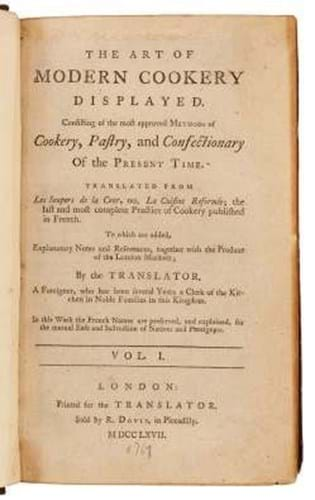
Bernard Quaritch is offering 'The Art of Modern Cookery Displayed', a 1767 first English translation of 'Menon’s Les Soupers de la Cour Les Soupers', priced at £4500. The translator of this work, whose subject is the lavish dining enjoyed in the reign of Louis XV, chose not to reveal his identity until the book was in its third edition. He then described himself as ‘B Clermont, who has been many years Clerk of the Kitchen in some of the first families of this kingdom, and lately to the Right Hon. The Earl of Abingdon’.
A number of these formed part of the 96-piece collection of the late Christopher Hogwood that was sold via a bespoke catalogue by Quaritch in 2016.
Hogwood, best known as champion of the early music revival, was typical of a certain type of collector. He enjoyed serving the dishes he found in his 16th, 17th and 18th century books and manuscripts, often hosting post-concert dinners with dishes from the same period as the music he had performed.
“There has been an increase more generally in historic recipes and techniques from the culinary world – witness the Heston Blumenthal restaurant Dinner where dishes are inspired by historic British gastronomy,” Rees adds.
Some of the calligraphic manuscripts – that were occasionally written by women for women – gain from their many annotations, with later readers suggesting improvements or adding further recipes to every free space. In Hogwood’s Mrs Nicolls’s Receipt Book 1776, amended and altered over the course of more than half a century, one recipe had been furiously crossed out, presumably because it had produced less than delectable results.
Manuscripts from this period can have crossover appeal for collectors of material concerning the history of medicine.
“In the 17th and 18th centuries there was a significant overlap between gastronomic, medical and household recipes, and you would often find directions for how to make a plum pie followed by ones for alleviating gout or polishing furniture,” says Rees.
“It is sometimes the medical content that attracts the most interest – particularly for example where there are cures for the plague.”
Forum Auctions has sold two of these in the past year: a manuscript c.1665 titled The Great Plague of London and Medical and Cookery recipes by Mary Syford was hammered down at £15,000 in May 2018, followed by another 134-page manuscript containing a recipe for ‘plague water’ that sold for £9000 in March this year.
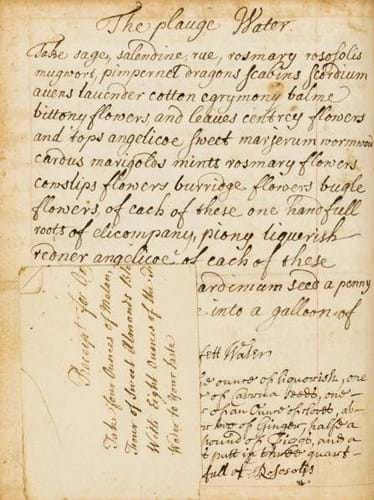
'Plague-water and cookery and medical recipes' by Mrs Sarah Jackson – a 134 page manuscript, accomplished in several hands, sold for £9000 at Forum Auctions as part of its March 28 auction. The recipe book, started in 1688 and continued by others until 1755, also includes ‘a receit of a cake to cure anythinge yt is bitt by a mad dog’.
Shaking up the market
While manuscripts and early editions of the classic texts might be out of the price range of many, ephemera relating to food and drink starts at far more affordable levels. Saunders adds: “Pamphlets and leaflets advertising food and recipes are real examples of their time and are increasingly popular. The quirkier the better.”
There has been an increase in demand for cocktail-related items from the Roaring Twenties in particular. Henry Sotheran has recently sold a 1930 first edition of Harry Craddock’s The Savoy Cocktail Book complete with directions for making the Rattlesnake, so-called because it will “either cure a rattlesnake bite, kill rattlesnakes, or make you see them”. It was priced just under £1000.
The Savoy edition remains a popular choice. Another is the ‘Coronation’ edition of the Café Royal Cocktail Book. One in a tattered dusk jacket featuring a design by Alex Jardine sold for £1150 at Gloucestershire saleroom Dominic Winter in November 2017. As Powell points out, in historical terms these are remarkable sums.
“Twenty years ago you could buy these books for almost nothing. People’s interest in ingredients and what goes into making the drinks has boosted the appeal of this genre and prices are rising.”


